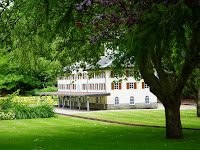



Observations from Kew Gardens (UK) and now Houston (US).



Windsor Castle
Maidenhead: Brunel Brick Bridge and Almshouse
Cookham-on-Thames: Holy Trinity Church
Henley-on-Thames: Site of the Royal Regatta
Lower Shiplake: Miniature Railway & Station


Maisie Brown wrote “Barnes and Mortlake Past with East Sheen”, one of a series published by Historical Publications Ltd. I attended her talk at Sheen Library because Mortlake includes the part of Kew in which I live. In addition, my Travel Writers Boot Camp assignment was “Historical research on a neighbourhood, tradition, or attraction.” I arrived early to ask Maisie “What attraction would pull an American tourist out of central London to visit Barnes or Mortlake?” Imagine my disappointment when this woman, who has devoted much of her life to researching this area, thought a moment and replied “Hampton Court.”
Maisie did tell us a humorous story from Victorian times. Kew market gardeners grew vegetables destined for Covent Garden. When the Hammersmith Bridge was built in the early 1800s, there were always traffic jams and the trip across the Thames could take hours. Fortunately for the drivers, their horses knew the route. The drivers would load up their carts with vegetables, point their horses toward the bridge, and promptly fall asleep. The horses would navigate their way until they reached Hyde Park Corner where they stopped – hay for the horses, coffee for the drivers.

